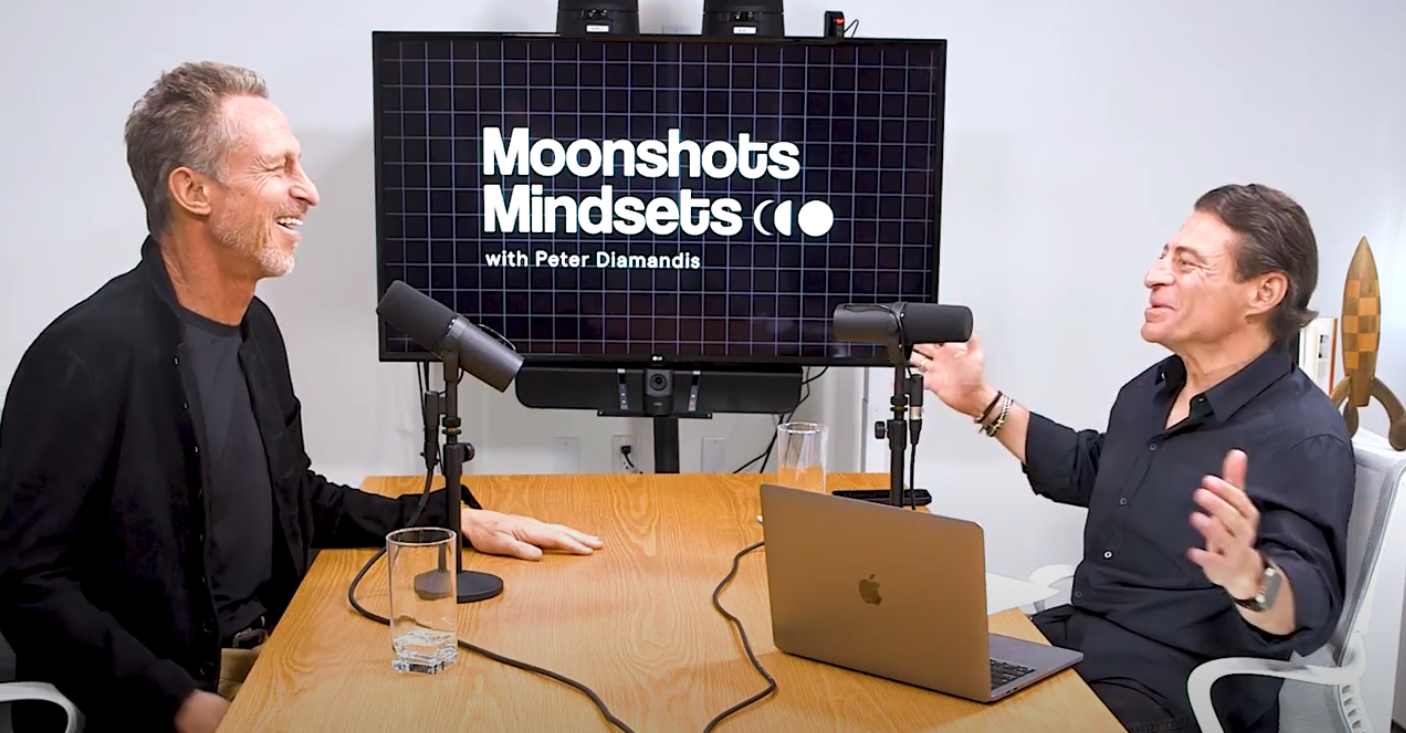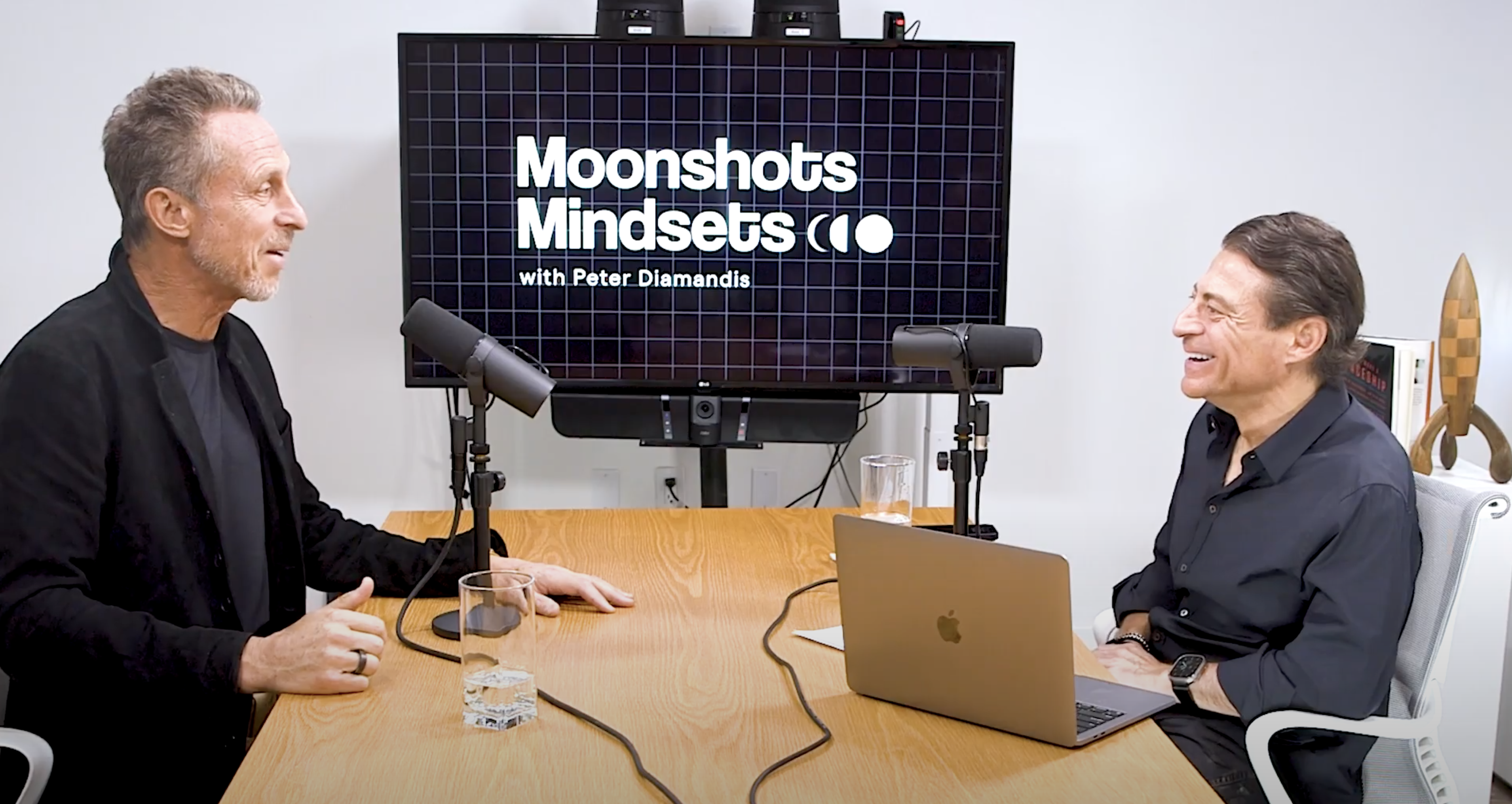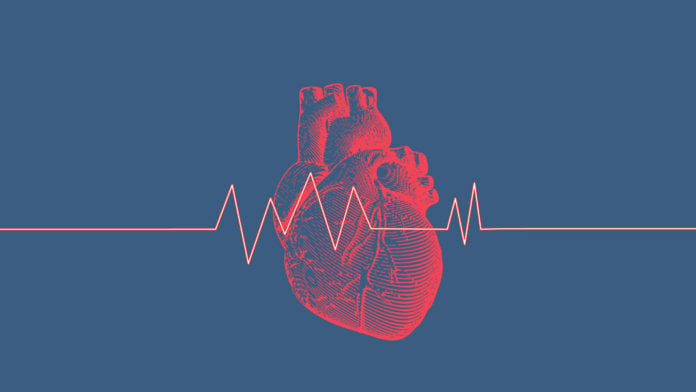
TLDR
- From mitochondrial dysfunction to senescent cell build-up and stem cell exhaustion, the nine hallmarks of aging are interlinked and, more importantly, reversible.
- Aging is a multifactorial process, and considering the interventions available today, a pluralist approach needs to be adopted to achieve age reversal.
- Deregulated Nutrient Sensing (DNS) is one of the most critical hallmarks of aging. And the good news is that while you wait for safe and effective age-reversing therapies, you can largely control DNS with lifestyle choices.
- In the coming decade, a multitude of biotechnologies will be translated into the clinic to effectively add decades to your life. Your job is to maintain your health until then!
Young Forever (part-3): UNDERSTANDING THE HALLMARKS OF AGING
What’s the science behind the aging process? How can it empower you to take control of your lifespan, and become the CEO of your own health?
Now more than ever, during a period of exponential growth in medicine, you may not have to accept the genetic cards you were dealt.
Mark Hyman, MD—a physician and author of the bestselling book Young Forever—recently discussed these topics with me during my Moonshots and Mindsets podcast. He was also one of the speakers at last month's Abundance360 Summit, Singularity University’s highest-level program.
As Dr. Hyman stressed, your genes only account for about 7% of the factors influencing your longevity (while some have said it could be as high as 30%).
Either way, the key point is that your lifestyle choices—how you live your life—account for the overwhelming impact on your healthspan.
In today’s blog—the third and final in our series based in part on Dr. Hyman’s work—we'll cover the nine-hallmarks of aging and understand their link to our daily habits.
NOTE: Every year, I take a small group of entrepreneurs, investors, and philanthropists on a 5-Star/5-Day Platinum Longevity Trip to experience first-hand the biotech and longevity revolution underway. You’ll meet with the top 50 scientists, CEOs, Scientists, Labs working on adding decades to your life.
By joining me on the Platinum Trip, you’ll get all your questions answered, key insights on how to extend your healthspan, and early access to diagnostics, therapeutics, and investment opportunities.
Let’s dive in!
(This blog is written by Peter H. Diamandis, MD and Raiany Romanni)
THE HALLMARKS OF AGING & THEIR LINK TO LIFESTYLE
From mitochondrial dysfunction to senescent cell build-up and stem cell exhaustion, the hallmarks of aging are interlinked and, more importantly, reversible.
As Dr. Hyman shared with me, “Each hallmark is influenced by the others and affected by various imbalances—too much or too little of certain inputs that can negatively impact the expression and progression of each hallmark. Understanding those interactions and weblike connections is the key to solving the puzzle of aging.”
As Dr. Hyman writes in Young Forever, his chronological age is 63—but his biological age is 43.
The hallmarks of aging are directly linked to our exposome—which is good news, since diet, exercise, and sleep can influence it. Each hallmark can influence and exacerbate one another. For example, genomic instability can lead to cellular senescence, while the accumulation of senescent cells can promote chronic inflammation and negatively impact stem cell function.
Similarly, deregulated nutrient sensing can impact mitochondrial function, which in turn may contribute to loss of proteostasis.
As Dr. Hyman writes in Young Forever, guiding the hallmarks of aging, we each have “four key nutrient-sensing systems that work together, with overlapping redundancies designed to beautifully protect us from disease and abnormal aging: insulin and insulin signaling, mTOR, AMPK, and sirtuins.” He adds that “most of the dietary and lifestyle strategies that prevent disease, promote health, and extend life work through these nutrient-sensing systems.”
As Young Forever explains, the modern American diet and lifestyle are at odds with what these systems were designed to achieve. Our nutrient-sensing systems, Dr. Hyman explains, “evolved in a very different time—a time of food scarcity, not abundance, a time of profound nutritional density in our food supply, a time of natural movement and exercise, a time of rhythmic living in harmony with day and night and the cycles of nature.”
In particular, Dr. Hyman shares that “sugar was scarce and refined grains nonexistent.” Today, however, the average American consumes 133 pounds of flour a year—which is consumed by the body the same way as sugar.
Below, we’ll look into the 9 hallmarks of aging and how to influence them.
GENOMIC INSTABILITY
Genomic instability refers to the accumulation of mutations in our DNA repair systems, affecting the way cells divide. Exposure to environmental factors like radiation, smoking, and pollutants have been proven to increase genomic instability—but aging is, of course, the single biggest risk factor for the diseases of aging.
“Each day,” Dr. Hyman writes in Young Forever, “our DNA gets up to 100,000 little hits, death by a thousand cuts—damage by UV radiation, environmental toxins, our nutrient-depleted, high-sugar, processed-food diet. The accumulation of these insults accelerates aging.”
How to stop DNA damage? Dr. Hyman notes that “by avoiding processed foods and limiting toxins, radiation, and stressors… and eventually editing our genes through tools like CRISPR—we can go in and repair the accumulated damage to our DNA.”
Sugar, on the other hand, “significantly damages the DNA,” and if Dr. Hyman had one suggestion on how to slow your aging, it would be to avoid your consumption of sugars and starch. (He adds that “below the neck, your body doesn’t know the difference between a soda and a bagel!”)
TELOMERE ATTRITION
Telomeres are protective caps on the ends of chromosomes that shorten each time a cell divides. Over time, as telomeres become critically short, cells lose their ability to divide and function properly, contributing to aging and age-related diseases.
The good news, Dr. Hyman writes, is that “we have tremendous influence over our telomeres… A whole foods phytonutrient-rich diet, exercise, sleep, love, and even a multivitamin all lengthen the telomeres.”
A study from the University of California, San Francisco, found that individuals who engaged in regular exercise, consumed a healthy diet, and managed stress effectively had longer telomeres than those who did not. A Nature study even proved that meditation is directly linked to lengthened telomeres!
EPIGENETIC ALTERATIONS
Epigenetics refers to changes in gene expression that occur without alterations to the DNA sequence itself.
Dr. Hyman says you can “basically think of your genes as a fixed set of instructions. It’s like piano keys. You’ve got 88 piano keys. You can’t change them, they just what they are. But,” he adds, “think of all the different things you can do on a piano. You can make jazz, rock, reggae, ragtime, classical music. The epigenome is like the piano player. It is Greek for ‘above.’ It regulates when genes are turned on or off.”
And the science is obvious. Dr Hyman writes that “the epigenome—how the music of your life is played—is not [fixed]; it is highly influenced by things under our control.”
Here again, diet is a major factor: polyphenols, for example, are compounds found in fruits, vegetables, and green tea, which can influence epigenetic regulation and promote healthy aging.
In the coming decade, epigenetic reprogramming may become a reality, with the potential to add decades of healthy years to your life via next-generation therapeutics. So the time to eat well, exercise, get good sleep, and meditate is NOW!
LOSS OF PROTEOSTASIS
Proteostasis refers to the balance between protein synthesis, folding, and degradation in cells. Dr. Hyman notes that “proteins regulate everything in your body. Your organs, tissues, and cells are made from proteins. Your cellular messenger molecules, like hormones, peptides, immune molecules, and neurotransmitters, are made from proteins.”
As we age, this balance becomes disrupted, leading to the accumulation of damaged or misfolded proteins that can contribute to age-related diseases like Alzheimer's and Parkinson's.
A nutrient-rich diet, good sleep, and regular exercise can help support proteostasis, prevent protein aggregation, and protect against neurodegenerative diseases. Dr. Hyman remarks that intermittent fasting is a powerful way to prevent the loss of proteostasis. “Periods of fasting, “ he writes, “(even overnight for 12 hours) give our body a chance to clean up the messes and damaged proteins we create from the way we live.”
DYSFUNCTIONAL MITOCHONDRIA
Mitochondria are the powerhouses of cells, responsible for producing adenosine triphosphate: a molecule that serves as the primary energy source for cells, and is needed for basic cellular function.
As we age, mitochondrial function declines, leading to reduced energy production and increased production of harmful Reactive Oxygen Species (ROS). These ROS can cause damage to cells and contribute to the forming of cancers, heart diseases, and dementia.
And you guessed it: lifestyle choices can help support mitochondrial function and reduce ROS production!
“The best way to clean up and rejuvenate old mitochondria,” Dr Hyman writes in Young Forever, “is to eat a whole foods low-starch-and-low-sugar, good-fat, microbiome-supporting, polyphenol-rich diet, practice intermittent fasting or caloric restriction, and incorporate hormesis (good stress) routines like cold plunges or showers, aerobic exercise, strength training, and a few key supplements.”
CELLULAR SENESCENCE
Cellular senescence occurs when cells lose their ability to divide and function properly, often as a result of accumulated DNA damage or telomere shortening.
Senescent—also known as “zombie”—cells linger in the body, and can accumulate in tissues contributing to inflammation. As Dr. Hyman puts it, these zombie cells “just run around… spreading their ‘zombieness’ to other cells.”
Senolytics, a novel “category of natural and pharmaceutical compounds,” have shown some effectiveness in combating these zombie cells.
One study mentioned in Young Forever “combined quercetin, a natural compound, with a leukemia chemotherapy drug called dasatinib to kill zombie cells; lifespan in mice was extended by 36 percent.”
Dr. Hyman adds that natural senolytics include “fisetin, from strawberries, persimmons, apples, cucumbers, and onions; luteolin, found in carrots, broccoli, artichokes, onions, chrysanthemum flowers, cabbages, and apple skins; quercetin, found in apples, grapes, berries, broccoli, citrus fruits, and cherries; curcumin, found in turmeric; and piperlongumine, an extract of goldenrod and an alkaloid found in long peppers.”
Another study in the journal Aging Cell demonstrated that regular exercise, and in particular weight training, reduces the number of senescent cells in skeletal muscle and significantly improves muscle function in older adults, delaying mortality.
(By now, you’ll have seen there’s a recurring theme here: diet, sleep, mental health, and exercise are critical tools to increase your healthspan!)
STEM CELL EXHAUSTION
Stem cells have the unique ability to self-renew and differentiate into various cell types, playing a critical role in tissue repair and regeneration. Every tissue in our body from our brains, muscle, skin and even fat has stem cells able to replenish that tissue. As we age, the number and function of stem cells decline, leading to reduced tissue repair capacity and contributing to aging. The decline may be as much as 1000x in key tissues between birth and older age.
During my recent Abundance360 Summit, Dr. Doris Taylor shared with me that “aging is failure of stem cells,” and offered the example that if a child hurts their knee, they heal quickly—while older adults tend not to heal at all.
Stem cell therapies transfusions have great potential to help replenish our stem cell populations. Today one can collect, store and expand stem cells from your own bone marrow or your fat, and provide them back to your body in the future. Alternatively, some people seek stem cell supplementation from umbilical cord stem cell transfusions which are available outside the U.S. such as in Costa Rica. It is hoped that expanded clinical research this decade under FDA trials will prove their safety and allow for such treatments in the U.S.
ALTERED INTERCELLULAR COMMUNICATION
As we age, communication between cells becomes less efficient, contributing to inflammation, reduced immune function, and impaired tissue repair.
Dr. Hyman notes that “when you consume subpar fats, your cell walls also become subpar. Instead of being flexible and responsive to intercellular communication, cell walls become stiff and rigid. The more rigid the walls, the slower the cell functions and more vulnerable it becomes to inflammation.”
Again, lifestyle factors like chronic stress, poor diet, and lack of exercise can exacerbate these changes. Eating foods rich in omega 3, like salmon and nuts, is a natural way of adjusting your intercellular communication. Unsurprisingly, several studies have proven that regular exercise plays a crucial role in maintaining effective intercellular communication during aging.
DEREGULATED NUTRIENT SENSING
According to Dr. Hyman, the single most important hallmark of aging is Deregulated Nutrient Sensing (DNS).
Nutrient sensing involves the detection of various nutrients such as glucose, amino acids, and fatty acids, by specialized cells and organs in the body. But the body's ability to properly detect and respond to changes in nutrient availability is influenced both by age and lifestyle choices—and when deregulated, nutrient sensing can singlehandedly lead to chronic diseases.
When nutrient sensing is malfunctioning, the body responds by increasing food intake and reducing energy expenditure to maintain homeostasis. Conversely, when nutrient sensing levels are high, the body reduces food intake and increases energy expenditure to prevent excessive nutrient storage.
In short, DNS occurs when the ability of cells to adjust their metabolism to the amount of nutrients available is malfunctioning.
Nutrient sensing pathways, such as insulin/IGF-1 signaling and mTOR, play an essential role in regulating metabolism, growth, and aging. Studies consistently show that interventions like caloric restriction and intermittent fasting can improve nutrient sensing and extend lifespan in various organisms.
“Food,” Dr. Hyman writes, “is the master controller [of longevity pathways].”
“High levels of sugar and starch don’t just act through the insulin-signaling pathway; they adversely affect all the longevity switches, including the mTOR, AMPK, and sirtuin pathways.”
Supplementation with nicotinamide mononucleotide (NMN) has also shown to help regulate nutrient sensing, while increasing nicotinamide adenine dinucleotide—NAD+—biosynthesis (which we lose as we age.)
Dr. Hyman notes that “NAD+ (and precursors NR and NMN) may be one of the most powerful discoveries in healthy life extension—it may be as close to the fountain of youth as we can get.”
FINAL THOUGHTS
The hallmarks of aging are not just intertwined, but reversible through lifestyle choices like exercise, mediation, diet, supplementation, and sleep.
In the decade ahead, with the convergence of genome sequencing, CRISPR technologies, AI, quantum computing, cellular medicines, and an abundance of capital flowing into aging research, they’ll be more safely reversed via high-tech interventions.
In the meantime, I urge you to remember that the power of shaping your healthspan—and allowing yourself to capitalize on the new therapies now in clinical trials—lies in your hands.
As Dr. Hyman remarks, our exposome—the sum of all the things we're exposed to in our life—is critical to our ability of “creating health.” And the good news is you largely decide what you’re exposed to in your day-to-day.
This means YOU have the power to influence the hallmarks of your aging process.
So, what will you do to become the CEO of your own health, and ensure you unlock an additional thirty years (or more) of healthy life?
Are you interested in learning how to increase your healthspan? And the top longevity-related investment opportunities available?
If yes, then consider joining me on my 2023 Platinum Longevity Trip.
I'm running two VIP trips I call my “Platinum Longevity Trip” covering top scientists, startups, labs and CEOs in Cambridge, Boston, New Hampshire, and New York. I do the same trip twice for up to 40 participants: Aug. 16 - 20, 2023 or Sept. 27 - Oct. 1, 2023.
Each trip is a 5-Star/5-Day deep dive into the cutting-edge world of biotech/longevity and age-reversal.
You’ll meet with the top 50 scientists, CEOs, and labs working on adding decades to your life, and learn about breakthroughs against a wide range of chronic diseases.
This year, some of the world-changing labs and faculty we’ll visit include: David Sinclair, PhD, Harvard Center for Biology of Aging Research; George Church, PhD, Harvard Wyss Institute; Dean Kamen, PhD, Advanced Regenerative Manufacturing Institute (ARMI); and Fountain Life, New York—just to name a few.
Both trips are identical (capped at up to 40 participants per trip), during which I spend all 5 days with you as your private guide and provocateur. Through this personalized, action-packed program, my mission is to give you exclusive, first-hand exposure to the major players, scientists, companies, and treatments in the longevity and vitality arena.
What you get: All your questions answered. First-hand insights and early access to diagnostics, therapeutics, and investment opportunities.
If this is of interest and you want to learn more, go here, indicate your interest and we'll set up an interview!
EP #29 Moonshots and Mindsets:
The Secret to a Long, Healthy Life With Dr. Mark Hyman
In this episode, Dr. Mark Hyman and Peter discuss the principles of longevity, the importance of muscle mass, and why sugar is poison.
Dr. Hyman is a leading expert in the field of Functional Medicine. He is a 14-time New York Times bestselling author, the founder and director of The UltraWellness Center, and the head of strategy and innovation for the Cleveland Clinic Center for Functional Medicine.
Peter's Picks
Each week I'll list 2-3 things I'm reading, thinking about, products I'm using, or experiments I'm running.
- Here's a great tweet with the latest AI tools for all solo entrepreneurs. Tweet at me @peterdiamandis if there are others you would recommend.
- Lex Fridman conducted an insightful interview with OpenAI CEO Sam Altman. Watch here.
- Last Thursday, I shared the link to AutoGPT. Here's a thread with all the cool things people are already doing with this tool.








